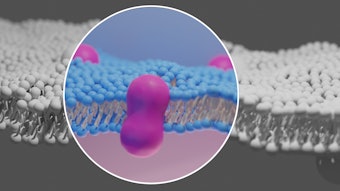
“Doctor, what should I use on my skin?” No matter what skin condition prompts a patient to visit a dermatologist, this question is almost sure to arise. That’s what motivated Dana L. Sachs, MD, and her colleagues at the department of dermatology, University of Michigan, Ann Arbor, to conduct research on the effectiveness of five well-known skincare products. Results of the study appeared in the article, “Hypo-collagenesis in photoaged skin predicts response to anti-aging cosmeceuticals” (Journal of Cosmetic Dermatology, June 2013).
“We chose five products with different active ingredients that had at least some published literature to explain why they might work,” says Dr. Sachs. “We wanted to see if there was a standout ingredient that might justify a larger clinical trial. Since previous research has shown that the appearance of photoaged skin strongly correlates with increased collagenesis as measured by the synthesis of procollagen 1, we set out to measure the effect of these products on this collagen precursor.”
The ingredients and products were:
Vitamin C cream, Active C, La Roche-Posay.
Alpha-lipoic acid cream, Antioxidant & Texturizing Day Cream, Reviva Labs.
Live yeast extract cream, Preparation H with Bio-Dyne, WhiteHall Robbins-Pfizer.
Collagen-derived pentapeptide cream, StriVectin SD, Strivectin Operating Company.
Idebenone 1% cream, Prevage MD, Allergan.
The researchers purchased the products and tested each on the forearm skin of 16 to 20 patients, 45 years of age or older, whose forearm skin showed clinical features of photodamage. Products were applied for 10 days to two weeks according to the manufacturers’ recommendations.
Four subjects left the study because of irritation caused by the creams and five others were eliminated from the results because of problems with tissue processing in the laboratory. The remaining 91 subjects were analyzed for procollagen1 levels determined by 4mm punch biopsies taken at baseline and 24 hours after the last topical application.
Results were similar for each of the products: Procollagen1 levels increased significantly for some subjects and not at all for others. After analyzing the data to see if any criterion was associated with response, they found the only factor that influenced treatment outcome was hypo-collagenesis (procollagen 1 level below 9) at baseline. Patients with hypo-collagenesis at baseline showed significant improvement independent of age, sex or type of product applied. Changes for patients with normal procollagen 1 at baseline were insignificant independent of age, sex or type of product applied.
“In the end you could argue that it didn’t matter which product you used. Significant changes were visible only in patients with crummy skin,” says Dr. Sachs. “That doesn’t mean the products might not produce subtle changes that could become visible over months or years of use. It just means we could not detect them with the tools available to us in this study. Still, based on what we learned here, I would like to do a follow-up project to see if applying basic petroleum jelly would have the same effect as the products we studied. We may be seeing nothing more than a moisturizing effect.
“I still believe there is a reason to use some skincare products,” says Dr. Sachs. “I’m a huge proponent of retinoids and there is quite a bit of research to support their effectiveness. Over the counter retinol products are less irritating to the skin than Retin A (tretinoin), but that also means there is no way to know how they are formulated—whether the concentration of actives is optimal, whether active ingredients are stabilized and whether the formulation will penetrate the stratum corneum. I tell my patients not to spend huge amounts on skincare products; but on the other hand, if they have the resources, I don’t talk them out of it. I definitely recommend daily sunscreen use and a retinol cream at night.”
Linda W. Lewis is a contributing editor to MedEsthetics.
Image copyright istockphoto.com











